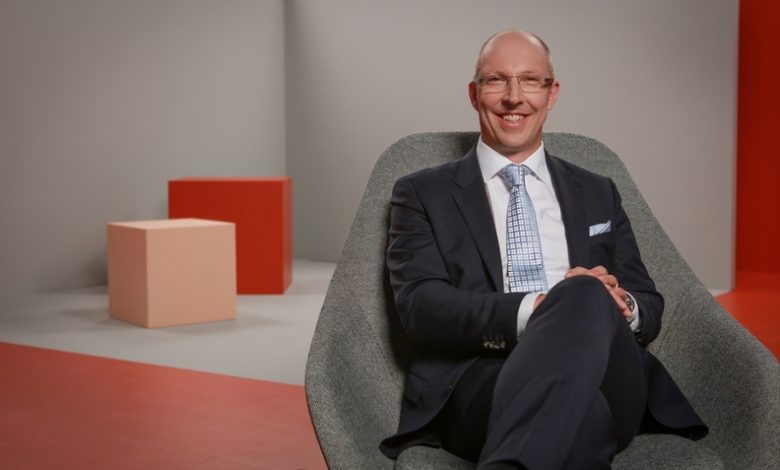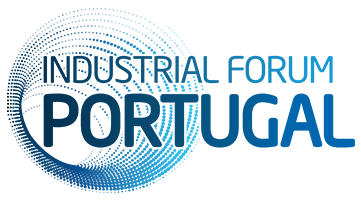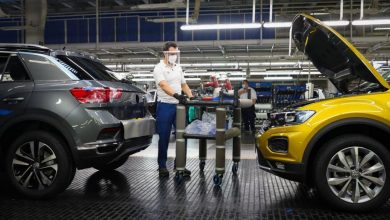
Volvo design chief casts wider net when filling vacancies
The move toward full-electric and fully autonomous vehicles is causing automakers to re-think their future models. At Volvo, this mindset change is providing opportunities to make the interiors of future models more like Scandinavian living rooms, said the Swedish brand’s styling boss, Robin Page. He also recently told Automotive News Europe Managing Editor Douglas A. Bolduc he is looking “beyond the normal automotive world” when he needs to fill a vacancy.
How will the move to full-electric cars change design at Volvo?
Our new platform [SPA2] will allow us to open up even more because of the flat-floor design. That will provide even more space for storage. We will also have things such as a thinner instrument panel, so, there will be some really nice design elements that are getting us closer to Scandinavian living room design. That creates some nice opportunities. We are also looking at recycled materials to provide new premium textiles. It is an interesting time.
When you hire are you still looking for people with a classic design degree or do you need people with different backgrounds?
Design traditionally was very much about exterior and interior and then there’s the color and materials. But now the user experience (UX) is a fundamental part of the whole design. The same is true for the overall approach to vehicle lighting systems. There’s so much more depth now to design. For those areas, we are looking beyond the normal automotive world. But we still, of course, need, young talents who are from an automotive upbringing. I would say it’s more of a mixed team. And design teams are always getting bigger and bigger because we are taking on more responsibility. It’s not just about the exterior and interior, what they used to call styling. It’s the full car experience.
Do you foresee that the person who succeeds you will still need the classic designer skill set or will there be other expectations?
The business now expects more than just a designer head. They certainly expect you to be capable in all the skills ets, but as you find in most industries, they also wanted you to work in clusters. For example, I am part of the cluster with engineering, procurement, quality and UX. You have got this kind of spectrum of people because to be a successful business, you need to be working cross-functionally. It’s not just about design. It’s about the bigger business. So, yes, the skill sets are changing.
Being forced to adapt can be very stressful, but it can also be exciting, right?
That kind of makes it interesting. The worst thing for a designer is being stuck in a loop where you do generation one, generation two, then generation three. Now it’s more of an expansion of a funnel, which is getting bigger as you explore more and more what’s important to the customer.
The early ideas we have seen for autonomous vehicles are primarily boxy-looking pods that resemble stagecoaches. Is that because there is no better way to move multiple people than in a box with wheels?
I am kind of excited by the full autonomous pods because I think that is probably where we will start, but it will change quite quickly into something else. We have a good relationship with Uber so we have been doing a lot of work with them regarding the cars, the XC90 that they have now, and what comes next. There are different needs. When we first started talking to them, it was about one or two customers taking a ride. One customer 60 percent of the time, two customers 80 percent of the time. Then it started to change into pooling. So then the pods become very relevant because you’ve got six people sharing. They don’t know each other. They are pooling. They are coming in and out of the car. But once that’s established there will come a point when people won’t want to share with people they don’t know. What do they need? At that point it comes back to individual travel again. So it’s going to bounce around for a while. Once customers experience something they will want the next generation. That will affect the design of the autonomous vehicles. It’s going to be a journey for the next few years.
How is the relationship with Uber helping Volvo?
We share ideas. What’s interesting is they have an incredible analysis of their usage. They are constantly analyzing changes in customer behavior. From that, they are predicting how things will change. Of course, they are predictions. But even so, it’s really interesting to see how that marketplaces is moving and changing quite quickly.
Font: Automotive News Europe





